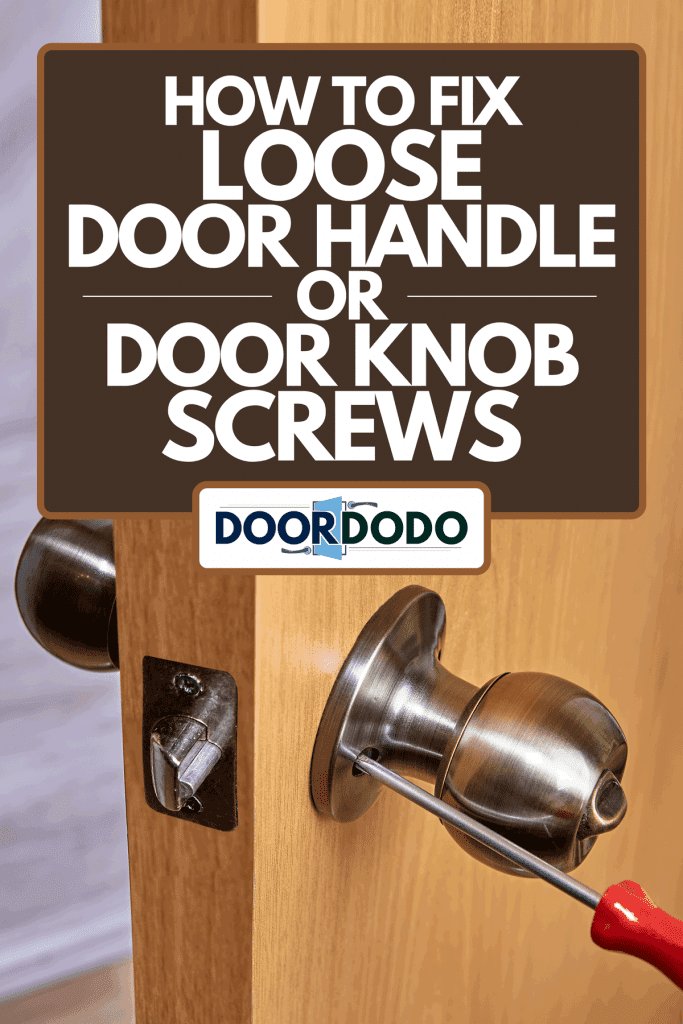
You might be wondering what could be happening inside that simple knob. We often think of door hardware as straightforward, but beneath the surface, there’s much more going on. Whether it’s a standard knob or a more modern design, the mechanics tend to be similar, and they can all develop internal problems. So, grab your tools, and let’s explore what could be going wrong.
Understanding the Mechanism of a Door Knob
To get to the bottom of the loose door knob mystery, it helps to know how the mechanism works. A typical door knob consists of two main parts: the outer knob and the inner mechanism. When you turn the knob, the inner mechanism engages a latch that allows the door to open or close.
Inside, there are a few components that play pivotal roles: the spindle, the latch assembly, and the screws. The spindle connects the two knobs and allows them to work together. If any part of this setup is worn out or misaligned, it can cause that frustrating looseness.
Think of it like a bicycle: if one part of the chain is off or a gear isn’t aligned, the whole system can feel shaky. The same principle applies here. Understanding this inner workings helps you figure out where things might be going wrong.
Loose Screws and How They Affect Stability
You’ve probably noticed that the most straightforward solution to a loose door knob is to tighten the screws. But here’s the thing: if the screws are loose again after you’ve tightened them, it could indicate a deeper issue at play.
If the screws don’t hold tightly, it might be due to stripped holes. This happens when the wood or material around the screw becomes worn out. Imagine trying to screw into soft sand; it just won’t hold. In this case, even if you crank down those screws, the knob will still wobble.
To fix this, you might need to use larger screws or fill in the holes with wood glue and matchsticks to create a tighter fit. This step is often overlooked but can significantly improve the knob’s stability.
Worn Out Internal Components
Another reason your door knob feels loose, despite tightened screws, could be worn-out internal components. The spindle, which connects the two knobs, can sometimes wear down, especially if the knob is frequently used.
When the spindle is worn, it can’t engage correctly with the latch mechanism, leading to a loose or faulty operation. You might notice that the knob turns but doesn’t fully engage the latch, or it might rattle when you jiggle it.
In such cases, the best approach is to replace the spindle. It’s a straightforward fix that can make a world of difference. Just remember to check the compatibility with your specific door knob model.
Misalignment of the Door Knob
Misalignment can also be a sneaky culprits behind a loose door knob. Over time, doors can swell or shift, making the knob not line up correctly with the latch. When this happens, it puts extra stress on the knob and its components, leading to that loose feel.
To check for misalignment, simply close the door and observe how the latch engages with the strike plate. If the knob doesn’t turn smoothly or feels off, that’s your sign. You might need to shim the door or even adjust the strike plate to fix this issue.
This fix is often more about patience than skill. Once everything aligns, you’ll notice that the door knob feels much sturdier.
Checking the Latch Assembly
If you’ve tightened the screws and checked for internal wear but still feel that wobble, it may be worth examining the latch assembly itself. The latch can become loose or misaligned, leading to a loose knob.
Start by removing the knob and inspecting the latch. It should move easily but not feel wobbly or loose. A failing latch may need to be tightened or, in some cases, replaced.
Taking a few minutes to ensure all parts of the latch mechanism are secure can save you from ongoing frustration. This small step can keep your door functioning smoothly and restore that solid feel to your knob.
Time for a Replacement?
At some point, if you’ve tried all the above steps and your door knob still feels loose, it might be time to consider a replacement. Door knobs, like many things, have a lifespan.
If you notice cracks, persistent looseness, or you simply want a fresh look, replacing the knob can be worth it. Modern knobs often come with better materials and mechanisms that stand up to wear and tear, making your life easier in the long run.
When choosing a replacement, consider the style, material, and whether you want to upgrade to a locking mechanism. This can be a fun opportunity to enhance your home security while solving that loose knob problem.
Final Thoughts
Dealing with a loose door knob can be frustrating, but understanding the internal issues makes it much easier to address. Whether it’s the screws, worn components, misalignment, or even a stubborn latch assembly, each potential problem has a solution.
Taking the time to troubleshoot and make fixes can lead to a more secure home and a happier experience every time you open or close that door. So grab those tools, dig in, and get your door knob back to feeling nice and snug. You’ve got this!
